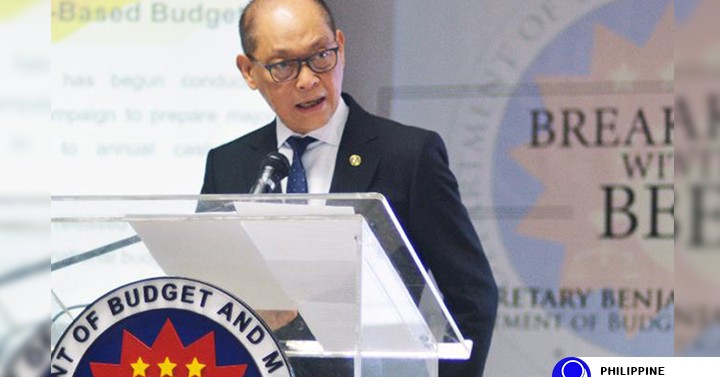Expecting that the previous rate cuts, totaling 200 basis points (bps), would help the recovery of the economy to pick up speed, the policymaking Monetary Board yesterday decided to maintain the key rates of the Bangko Sentral ng Pilipinas (BSP).
The interest rate on the BSP’s overnight reverse repurchase facility remains at 2.0 percent after the previous meeting’s 25 bps cut.
The interest rates on the overnight deposit and lending facilities were likewise kept at 1.5 percent and 2.5 percent, respectively.
Benjamin Diokno, BSP governor and head of the Monetary Board, said the “monetary policy settings remain appropriate.”
“The Monetary Board believes that an accommodative monetary policy stance, together with sustained fiscal initiatives to ensure public welfare, should quicken the economy’s transition toward a sustainable recovery,” Diokno said.
Central banks reduce interest rates to encourage borrowing and investing, thereby possibly stimulating economic growth. Although this move may hasten inflation, the Monetary Board has room to move as prices of major commodities are expected to remain at comfortable levels.
Rates are raised, meanwhile, when there is too much growth, which is not the case now. Global economic activity, including that of the Philippines, is expected to slow down this year as almost all countries are affected by the virus.
Diokno said the inflation environment remains benign.
“The latest baseline forecasts have risen slightly due to the sharp increase in global crude oil prices and the higher-than-expected food inflation in November. However, since the rise in food prices is transitory, it is expected that the future inflation path will remain firmly within the government’s 2-4 percent target over the policy horizon,” Diokno said.
He added the balance of risks to the inflation outlook “leans toward the downside from 2020 to 2022 owing largely to potential disruptions to domestic and global economic activity amid the ongoing pandemic.”
Diokno said the Board noted that the resurgence of coronavirus disease 2019 (COVID-19) cases globally “has tempered economic activity with the reimposition of preventive measures in recent weeks.”
“Optimism over the delivery of vaccines has lifted market confidence, supporting improved prospects for global growth. On the domestic front, the Monetary Board also observed early indications of improved mobility and sentiment. While recent natural calamities could pose strong headwinds to growth, the further easing of quarantine measures should help facilitate the recovery of the economy in the coming months,” Diokno said.
The move was widely expected by economists.
Michael Ricafort, Rizal Commercial Banking Corp. chief economist, said as average inflation from January to November stands at 2.6 percent, the decision results in “negative interest rate returns and making any further cuts in local policy rate somewhat challenging for now.”
Ricafort said total cuts so far in 2020 is at -2 percentage points (or -200 bps) from 4 percent in end-2019, considered among the most aggressive worldwide.
“However, inflation is expected to ease from December 2020 to February 2021 to a little over 2 percent or even slightly below 2 percent largely due to higher base/denominator effects prior to COVID-19, thereby could still support any additional monetary easing measures, going forward.” Ricafort said.
“Inflation could fundamentally pick up in 2021 especially if economic recovery picks up further, especially with any additional measures to further re-open the economy especially if the COVID-19 vaccine rolls out in 2021 that could help lower new COVID-19 local cases, increase infrastructure spending, and lower base/denominator effects starting March 2021 or exactly a year after the COVID-19 lockdowns/pandemic started that would mathematically lead to higher year-on-year inflation rate thereafter, assuming all other factors remain the same,” he added.
Alex Holmes, Asia economist of London-based Capital Economics, however, sees “more easing to follow in 2021.”
“With the recovery proving weak, further easing is likely next year. The pause was no surprise,” Holmes said.
According to Holmes, the BSP “sounded hopeful of the recovery picking up speed, noting that the accommodative monetary stance and fiscal initiatives should quicken the economy’s transition to a sustainable recovery.”
“But we suspect the recovery in the quarters ahead will disappoint. GDP saw a lackluster rebound in the third quarter, with the pace of contraction only easing from -16.9 percent year-on-year in the second quarter to -11.5 percent. And we have penciled in another weak rebound in growth this quarter, to -8.5 percent,” Holmes said.
With the virus still not under control, Holmes said restrictions will need to remain in place for longer, which will further hold back the recovery.
“Promising news on vaccines looks unlikely to quickly change the situation. While the Philippines is reportedly close to securing 25 million doses of the Sinovac vaccine, that would only be enough to inoculate just over 10 percent of the population. What’s more, the economic scars from the downturn, including business insolvencies, weaker household balance sheets and higher unemployment, will weigh heavily on demand for many months to come. Overall, we are expecting the economy to contract by 9.5 percent this year and grow by 11 percent in 2021, which would still leave output around 10 percent lower than its pre-crisis trend by the end of next year,” Holmes said.





 Core inflation, which excludes selected food and energy items, inched up to 3.2 percent in September from 3.1 percent in the previous month.
Core inflation, which excludes selected food and energy items, inched up to 3.2 percent in September from 3.1 percent in the previous month.